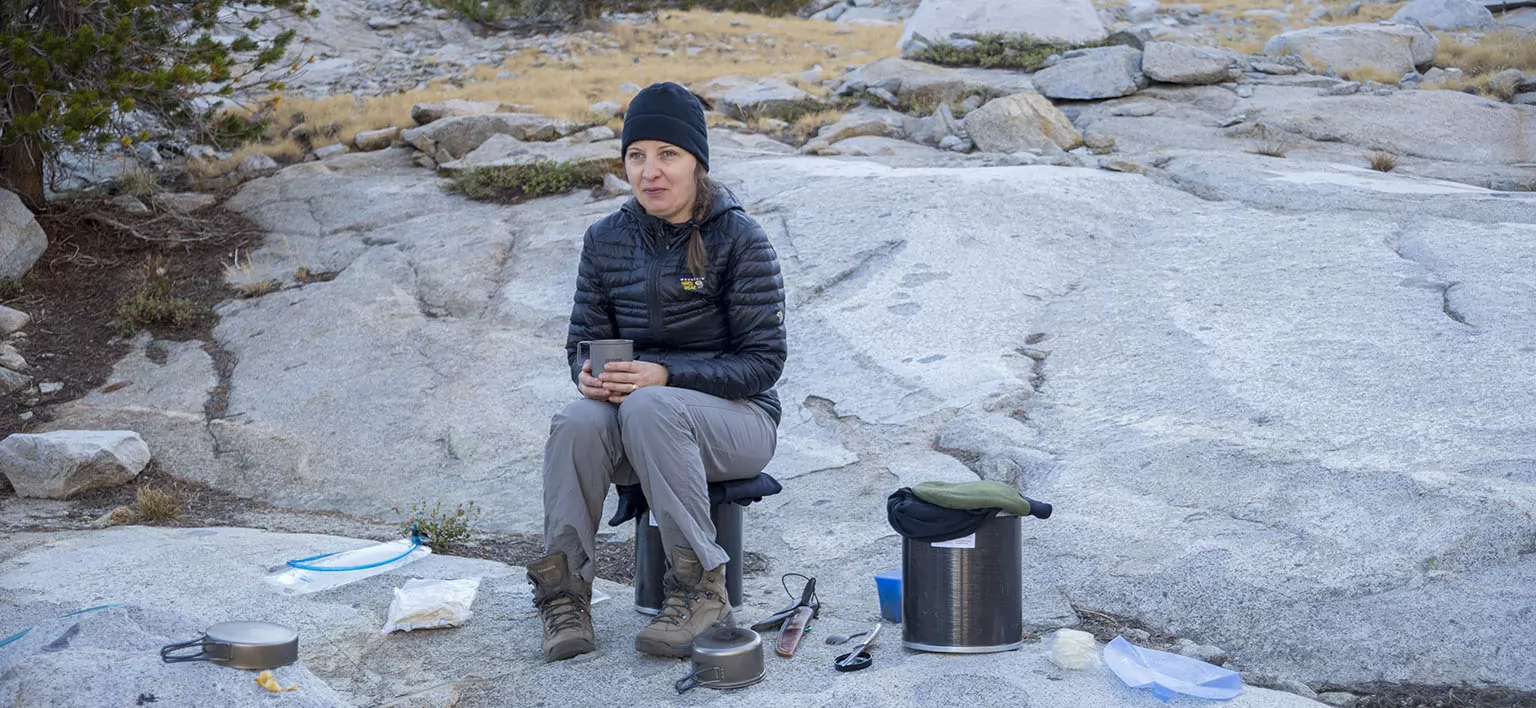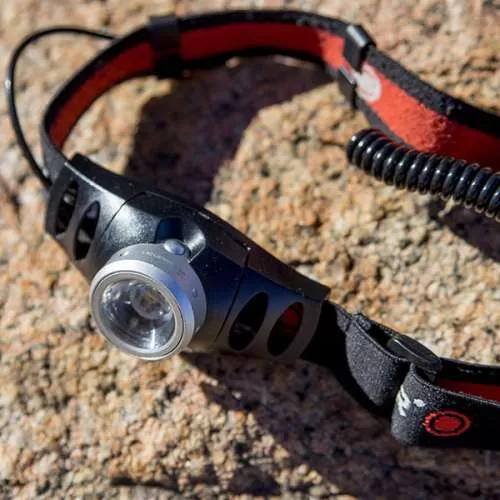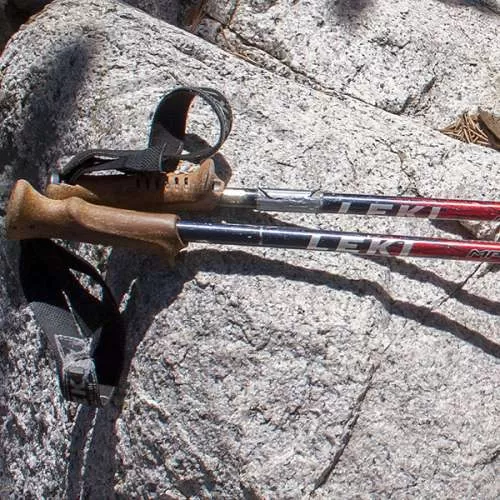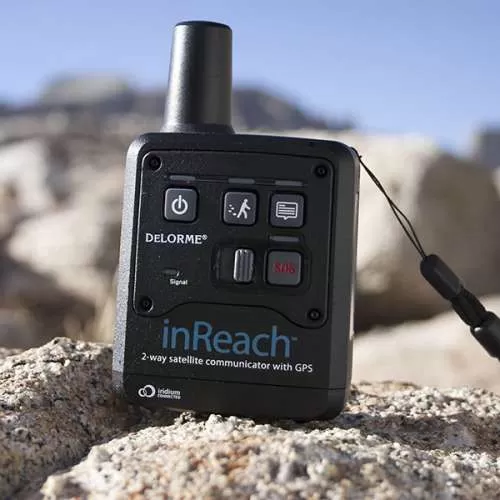
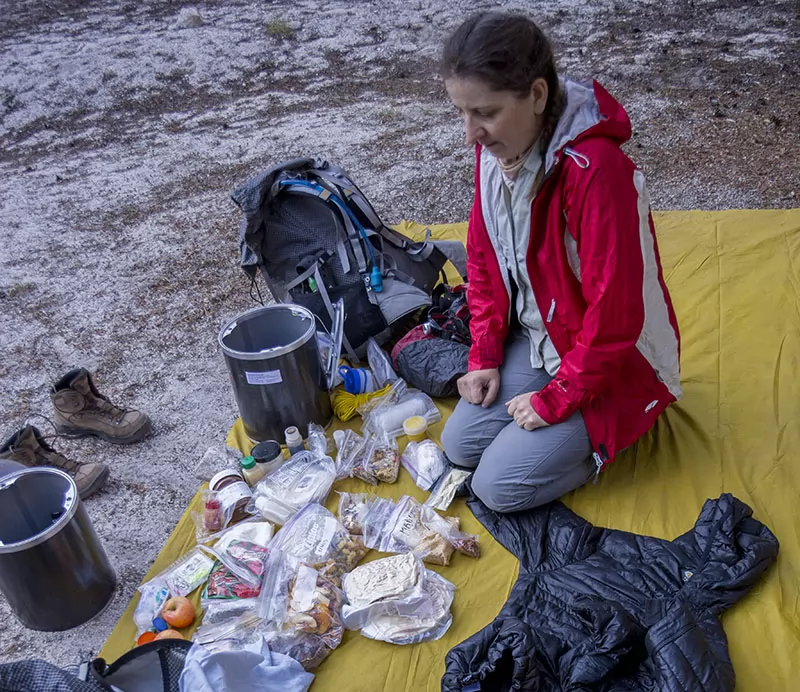
Intro
"Honey, where is the (insert name of food item here)?" "In the other one!"
Bearproof canisters are the big headache of many ultralight hikers. Of course you don't want to carry this extra weight. They seem superfluous. 99% of the time, there's zero need for them.
However, in many popular wilderness areas, it's the law, and if you're caught without one, the penalty is steep. Also, if you've ever been around bears you know you don't want to wrestle one for your food, even if the likelihood of this happening is low.
The main argument to keep in mind is that "a fed bear is a dead bear". If you let them access your food, you're killing them. They get accustomed to the fact that food can be obtained from humans, and the rangers don't have a choice but to shoot them. So there's no way around it, in most areas of Sierra, you need a bear canister.
The canister's main function is to withstand prolonged assault from a very smart and very powerful bruin who's fixated on accessing its contents. Thus they have to be built of very strong materials, which makes them heavy. Many people think it's also about sealing in odors so the bear doesn't even know what's in there. That's a huge misconception. Bears have such a good sense of smell, they could tell you what's in your canister from the other side of the mountain. Maybe I'm exaggerating, but the point is they know very well what you're hiding, so the canister has to be strong enough to suffer until the bear gets bored and gives up.
Choices
At the very beginning, we had a Garcia. It's the cheapest, but by far the heaviest at 2 pounds 12 ounces, and it's very awkward to pack. Hated it from day one. Thank goodness, we didn't have it for long. On our Mini Trans-Sierra trip, we took the Garica plus a rented Bearikade, and we fell in love with the Bearikade right away. On a side note: now we easily do longer trips with only one canister, but that's another story.
Another popular canister is the Bear Vault, the "regular" size weighing only a bit less (2 lbs. 9 oz.) than a Garcia. It also has the advantage of being transparent, meaning it's a bit easier to find something. I've seen this canister in stores and in the field, but never used one myself.
A fringe approach is the Ursack, which is not a canister, but a sack made of almost-indestructible Kevlar. Its use is highly controversial, and depending on who could bully whom in any given season (and in court), sometimes it's approved for use, sometimes it's prohibited. The huge advantage is its weight: only around 8oz. The main downside is obvious: if a bear gets to play with it for a while, everything inside will be turned into mush and powder and whatnot. I leave it up to your imagination whether that's fun... They also sell a tube-like aluminum insert for it, but then the weight becomes pretty much the same as the Bearikade.
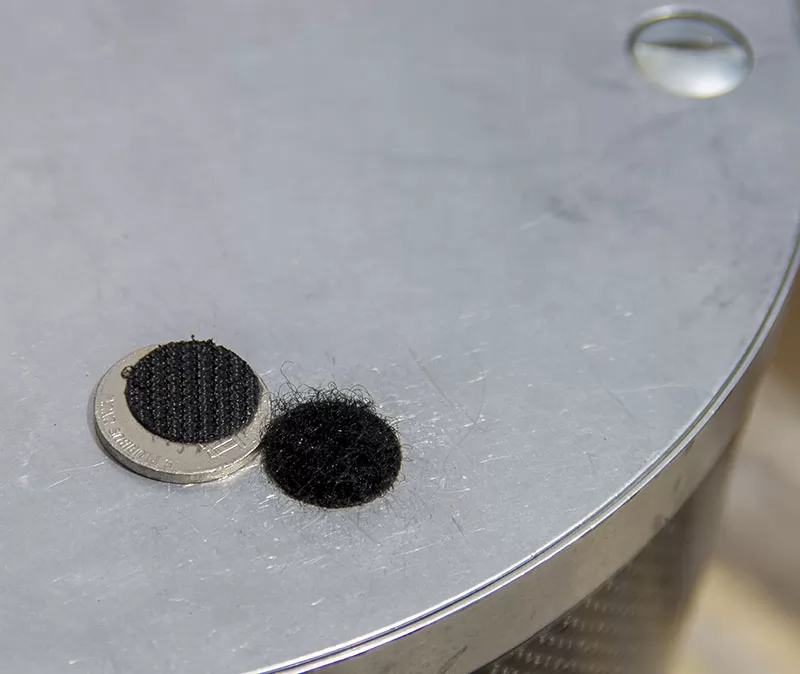
The Bearikade
So, after trying the Bearikade, we decided to get not one, but two of those. It was before our first Mt. Whitney trip, and as we decided to do longer treks on a regular basis, it made sense.
The Weekender model is somewhat bigger in volume than the Garcia, but it weighs a full pound less. Also, it's much, much easier to pack. It's very expensive, though, far more expensive than any of the other ones.
I looked online for a long time to try to buy one used, but that's close to impossible. Almost nobody ever sells them, and if they do, they're gone in a second, and at a very high price. I thought "Hmm, that means the resale value is great, if we somehow manage to put enough money aside and buy two, we can always sell them if we're in a squeeze."
After all this consideration, we ordered two, and thank goodness, we never had to consider selling them and I hope we'll keep using them for a long time.
Construction & usage
The Bearikade is handmade by some really cool people up in the Central California area, and every single bit is engineered to perfection.
The lid is aluminum, and it locks with three screws that have to be turned by something strong and thin (e.g. a coin). I glued the soft side of a little piece of Velcro on the lid, the counterpart on a nickel, off center. This way, the opening tool is right there all the time. Until now, we lost a grand total of two nickels, none of them in the wilderness. This solution would not work for many people who put their canisters horizontally in their packs, but our packs are too small for that, we put them in vertically (and there's still a lot of room in the Golites, even on a weeklong trip).
There's an o-ring around the lid and it seals airtight. I heard of a test where they put bricks in the canister, then let it sit at the bottom of a pool for a day, and after they opened it, the interior was still dry. I haven't done anything this extreme, but from what I've seen, I believe this.
The whole canister is a straight tube, meaning no bends to work around while stuffing it. It's a million times easier to pack than the Garcia. The Weekender is rated for 6 person-days of food, and that's mostly true. However, with our ultra-compact food system we can stretch that to 7-8 days and a bit beyond. A good example: on our 8-day trip in Yosemite in 2015, we had our two Weekenders packed to the brim (first day's food not in there, of course), and at the end, we still had at least two meager day's worth of chow.
Leaving it for the bears
At night (or whenever you're not within arm's reach of them), the canisters must be fully locked. When leaving them for any length of time, especially at night, it's a very good idea to put them in a place from where the bear can't roll them into some inaccessible place like a deep ravine, a river or something similar. I heard stories about a very smart bear in Yosemite, who frequented a backcountry campsite and rolled the canisters off a 2000-foot cliff, then hiked all the way down to the wreckage to enjoy the spoils.
Very often, we also leave the empty and clean titanium pot on top of the canister (with a small rock inside so wind doesn't blow it away easily) to act as an alarm.
Also, a good idea is to figure out from where the sun is going to shine in the morning and place the canister on the shady side of a tree or rock. Especially in mid-summer, when the sun rises very early, you may sleep somewhat later, and even a few minutes of full sunshine can heat up the black canister considerably. I know usually nobody carries perishable food in the backcountry, but still, heat is never a good thing.
I also have to state for the record that in ten years of using bear canisters for 20-30 nights a year, we never, ever had a bear touch them or even go near them. However, that doesn't mean we won't keep carrying them. I've been around bears a lot, I have an idea about that they can do, I think I'd even take a canister with me if it wouldn't be mandatory.

Other uses
If this is not obvious, the canisters make excellent camp chairs. Of course, the aluminum top gets very cold if the weather is chilly, so we usually put a folded-up piece of clothing between our butts and the lid.
For each, I printed a label with our info and emergency contact, then glued it on with wide transparent tape, rendering it waterproof.
Also, it makes a great bucket. On longer trips, if we have time, we do laundry. We put all the food from one of them in a backpack, hang it from a tree right next to us, and then I carry water in the canister (at least 100' away from the source) and Em washes our dirty clothes with a tiny bit of unscented soap. Works great.
One thing you should never do is heat water in it. The glue holding it all together can't stand extremely high temperatures. While it seems like a good idea to boil water in the canister, it would destroy it.
Wear and tear, customer service
I have only the best to say. We take good care of them, try not to bang them around, wipe off dirt when necessary, not force the locks when something is stuck (like the corner of an energy bar), but we use them a lot, and they have been holding up very well.
In the ten seasons since we bought the Bearikades, they've seen snow, sand, rock, heat, cold, whatever you can imagine (save for bears, funny enough). There are minor scratches on both, but they look almost new. All the locks are still in perfect working order.
The only minor malfunction we had was in September 2015 when we went up with one canister to Mineral King to watch the moon eclipse. The aluminum wire tying the lid to the body suddenly broke. We got used to let the lid hang on the side when open, so now we had to watch where we put it for the next three days. No big deal. Upon returning home and examining the other one, it looked like the wire is about to break there, too.
Customer service is excellent. The gentleman in charge of the operation, Allen, is a really cool guy. Whatever questions you have, he answers right away.
In my case, he emailed me prepaid labels for both canisters, I just had to pack them up. Four business days later, we had them back, nicely repaired. I almost didn't want to believe the speed of the service.
Notes
Yes, these things are expensive, but they're worth every penny and they hold their value like nothing else. They are the lightest, work very well, and as described above, customer service couldn't get much better.
Their website: wild-ideas.net
